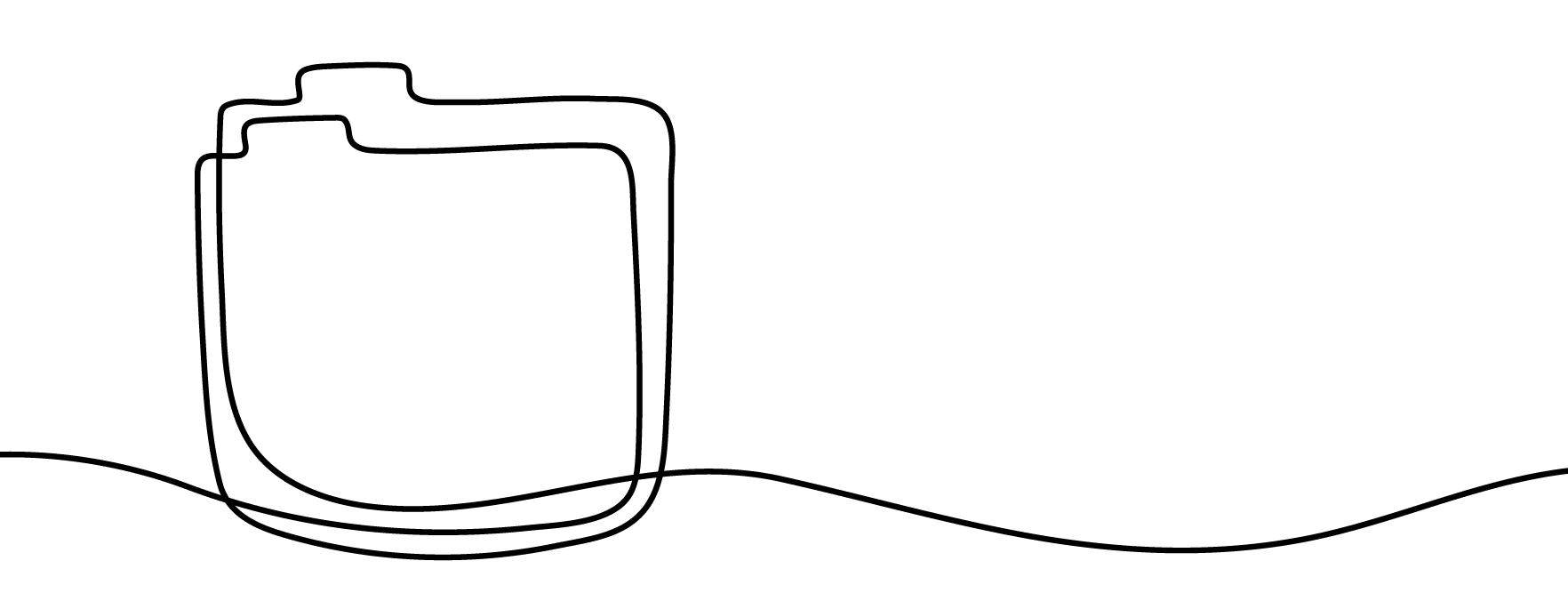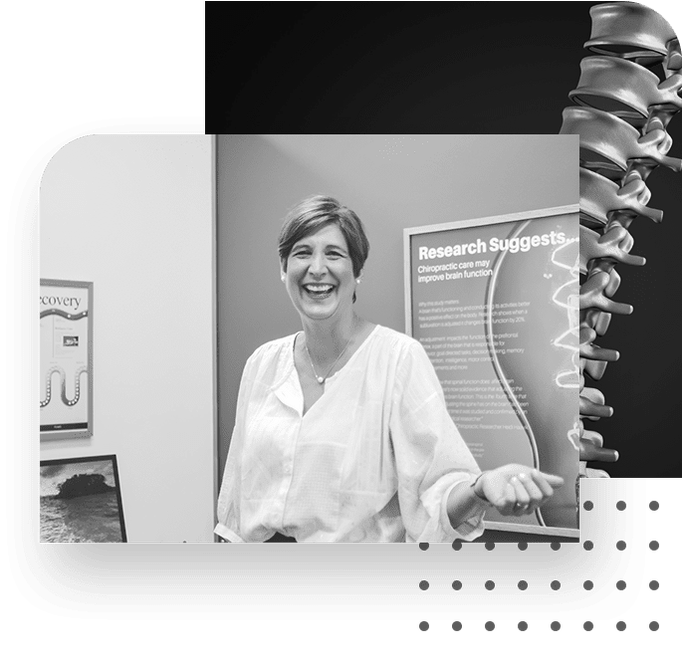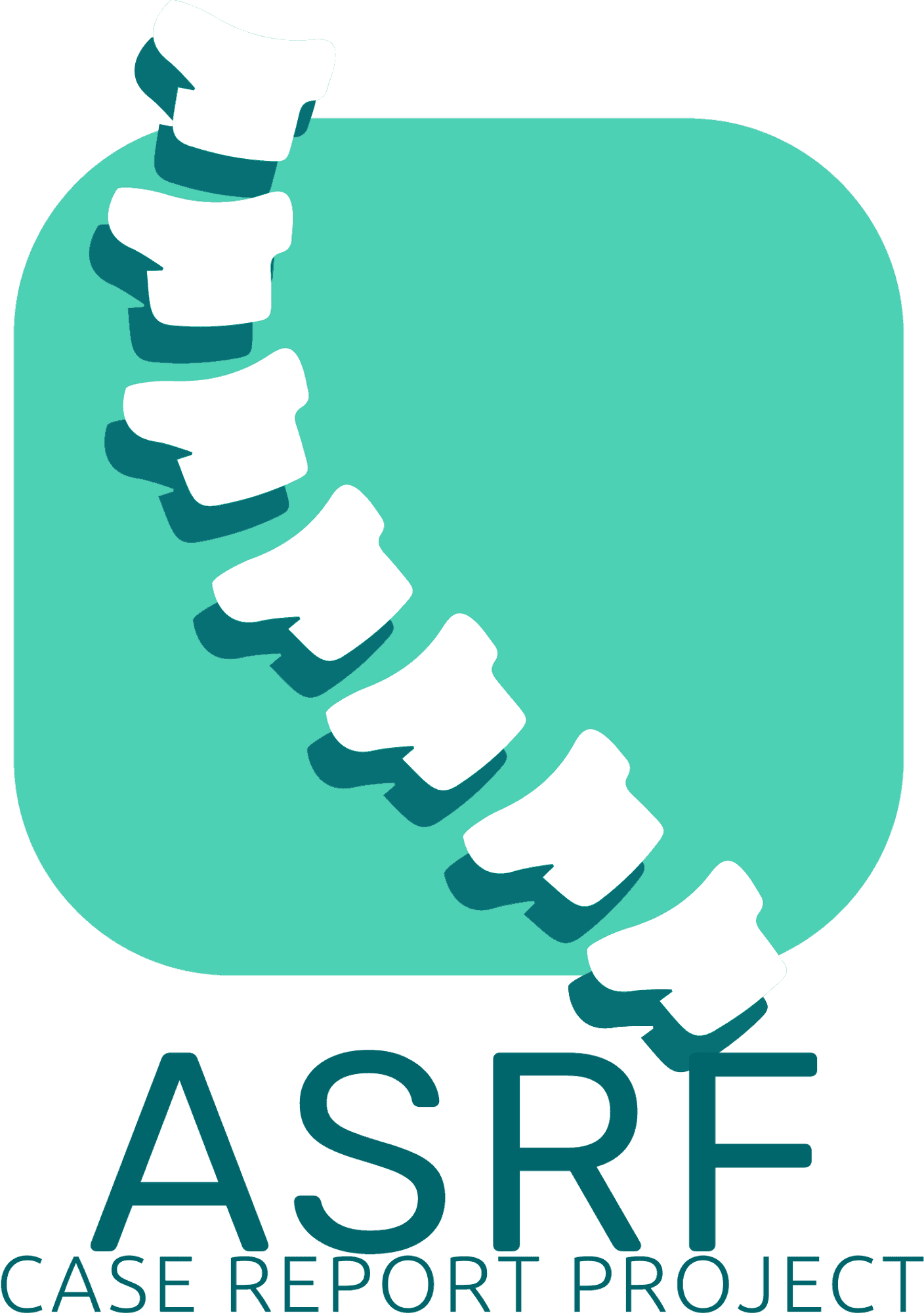Chiropractors can read us anywhere, anytime
Third Quarter 2025
(July-Sept)
Volume 6, Issue 1 (6-1)
read with your mind, care with your heart
The problem with subluxation
Narrative: The problem with subluxation is political, not scientific nor philosophical. Subluxation has strong clinical relevance within the practice of Chiropractic, being integral to some 80% of the profession.
The political positions and phrases which do little to advance or clarify the term are those offered by a small regulator in Britain based on 3 Heads of Chiropractic education programs each making a personal decision to eschew the term.
Sadly we see a few institutions in other parts of the world plagiarise by cut and paste the GCC position, adopting it without critical review let alone without supportive evidence.
If what I am saying actually represents the situation then Chiropractic education is slipping into a very weak position where an institution puts itself in a position to fail to attract future students due to them choosing to remove the essential essence of the discipline they purport to teach.
Indexing Terms: chiropractic; subluxation; GCC, Rosner, FVSR White paper; ontology; epistemology.
Cite: Ebrall P. The problem with subluxation. Asia-Pac Chiropr J. 2025;6.1. apcj.net/papers-issue-6-1/#EbrallProblemSubluxation
The management of diagnosed Migraine patients through manual therapy: A Systematic and Critical Review
Introduction: According to the French National Institute of Health and Medical Research (INSERM), approximately 15% of the global population is affected by migraine. However, the actual prevalence remains uncertain, as many individuals do not routinely seek medical care and resort instead to self-medication. In France, as reported by AMELI, around one-third of individuals with migraine in 2023 did not receive comprehensive medical follow-up. This information gap underscores the need for an improved understanding of the condition and the available treatments to optimise patient care.
Objective: The primary objective of this study is to evaluate the role of manual therapy in the management of migraine, with a view to potentially reducing the frequency and severity of attacks. Through a systematic and critical review of the literature, the aim is to highlight the most appropriate approaches for managing migraine through manual therapy.
Methods: A literature search was conducted using PubMed, PEDro, and the Cochrane Library databases for articles published between 1963 and 2024. Keywords included: headache, migraine disorder, manual therapy, physical therapy, musculoskeletal manipulation. The quality of each study was assessed using the SIGN grading system for randomised controlled trials (RCTs).
Results: Seven randomised controlled trials (RCTs), involving 453 participants, were selected. The findings suggest that Chiropractic manipulations (high-velocity low-amplitude [HVLA], Gonstead technique), as well as soft tissue relaxation techniques, may be effective in managing migraines (in terms of intensity, frequency, and duration of episodes) and associated comorbidities. Furthermore, these interventions appear to reduce the use of analgesic medications.
Discussion/conclusion: Manual therapy, including spinal manipulations and soft tissue techniques, may represent a viable therapeutic option for modulating the intensity, frequency, and duration of migraine attacks.
Indexing Terms: Migraine, manual therapy, systematic review, headache, manipulation, soft tissue, Gonstead, HVLA, LVHA, Trigger point, Active Release Technique.
Cite: Allix F, Aubry A, Hoog V, Lorenzelli C, Sok S. The management of diagnosed Migraine patients through manual therapy: A Systematic and Critical Review. Asia-Pac Chiropr J. 2025;6.1. www.apcj.net/papers-issue-6-1/#AllixMigraine
Hypothesis: Chiropractic adjustments reduce the risk of stroke in Long COVID
Narrative: The hypothesis that Chiropractic adjustments reduce the risk of stroke in long COVID victims gains initial plausibility from the existing evidence of the effect of Chiropractic adjustments on at least two modifiable risk factors for stroke. These factors are depressed pulmonary function and sedentary lifestyle.
In addition to evidence that Chiropractic adjustments can ameliorate these risk factors generally, case reports suggest that depressed pulmonary function and sedentary lifestyle are ameliorated by Chiropractic adjustments in Long COVID victims specifically.
Approaches to future research to confirm or not confirm the hypothesis are discussed.
Indexing terms: Chiropractic; hypothesis; adjustment; stroke risk; Long COVID.
Cite: Masarsky CS. Hypothesis: Chiropractic adjustments reduce the risk of stroke in Long COVID. Asia-Pac Chiropr J. 2025;6.1. www.apcj.net/papers-issue-6-1/#MasarskyLongCOVIDHypothesis
Scalenus Anticus Syndrome: A root of the neck and shoulder disorder
Narrative: The scalenus anticus syndrome is a neurovascular compression at the root of the human neck and torso, the interscalene triangle, and is made up of the scalenus anticus and medius muscles and the 1st rib.
The condition is very often associated with hyperextension–hyeprflexion cervical strain–sprain, as in auto accidents, sometimes with occupations and activities that use the arms in a repetitive manner, such as supermarket cash register operators.
It is a very common muscle and joint problem that is pervasive in the Chiropractic patient population. Differential diagnosis of this important problem is necessary, because it is sometimes associated with a cervical rib, which may be a complicating congenital anomaly. Occasionally the scalenus anticus syndrome may be caused by the anomalous course of the subclavian artery through the scalenus anticus muscle.
Indexing Terms: Chiropractic; AK; Applied Kinesiology; Scalenus Anticus Syndrome; Scalenes; MMT.
Cite: Cuthbert S. Scalenus Anticus Syndrome: A root of the neck and shoulder disorder. Asia-Pac Chiropr J. 2025;6.1. www.apcj.net/papers-issue-6-1/#CuthbertScalenusAnticus
Shiatsu, a natural pairing with Chiropractic practice
Purpose: To provide a qualitative report using peer reviewed published articles, reports, and contemporary textbooks to demonstrate the beneficial pairing of Shiatsu with Chiropractic.
Methods: A Narrative Analysis was undertaken of the literature expanding outwards from accepted definitions of general meridian therapy and Shiatsu in specific, to identify peer reviewed published studies.
The studies included linking Shiatsu therapy with fascial and neurological patterns and disruptions of those patterns and their ramifications in postural and hence spinal distortions.
Conclusions: Shiatsu and Chiropractic, both being a purely ‘hands only’ well established mode of health care would create positive symbiosis for patient care in the healthcare system and in the health of the individual with this combination.
Indexing terms: Chiropractic; Shiatsu; meridian; meridian therapy; fascial sheath; fascial torque; trigger point; Keiraku.
Cite: Weiner G. Shiatsu, a natural pairing with Chiropractic practice. Asia-Pac Chiropr J. 2025;6.1 www.apcj.net/papers-issue-6-1/#WeinerShiatsu
Advancing Chiropractic globally through educational leadership: Addressing the urgent need for Faculty Development in emerging countries
Objective: This paper aims to highlight the critical shortage of qualified Chiropractic educators in developing countries and proposes sustainable strategies for resolving this gap.
Background: Chiropractic is currently practiced in approximately 120 countries; however, just over 50 university-level Chiropractic education programs exist worldwide, with the majority concentrated in only four English-speaking nations. This educational imbalance significantly restricts the profession's global growth.
Discussion: Historical attempts to establish Chiropractic education programs internationally through scholarship schemes, twinning partnerships with Western institutions, and satellite campuses have often failed due to inadequate planning, inconsistent support, and limited local infrastructure. These unsuccessful approaches underscore the necessity for countries to cultivate their own Chiropractic educators and programs.
Conclusion: The Chiropractic Diplomatic Corps advocates for prioritising Chiropractic educational infrastructure as ‘Schools Before Laws’ to sustainably advance the profession globally. This paper emphasises the strategic importance of forming an international faculty pool to provide essential support for emerging Chiropractic programs.
Indexing Terms: Chiropractic; Chiropractic Education; Global Health; Faculty Development; International Collaboration.
Cite: Tetrault MY. Advancing Chiropractic globally through educational leadership: Addressing the urgent need for Faculty Development in emerging countries. Asia-Pac Chiropr J. 2025;6.1. www.apcj.net/papers-issue-6-1/#TetraultEmergingEducation
Sacro Occipital Technique (SOT): Questions and Answers (Q+A)
Narrative: This paper presents ten questions and answers regarding the Sacro Occipital Technique (SOT) method of chiropractic. My intention in writing this paper is to help readers to further develop their understanding of SOT.
SOT methods are system-based and clinically driven using functional indicators, (4, 5, 6,10) employing techniques that both analyse and adjust three key body systems (categories).
SOT was established and developed by Dr MB DeJarnette, based on over 70 years of dedicated research, study, writing, and teaching.
Indexing Terms: Primary Cranial Sacral Respiratory Mechanism (PCSRM); Systems chiropractic; Lumbar disc lesions; Sitting disc technique (SDT).
Cite: Getzoff H. Sacro Occipital Technique (SOT): Questions and Answers (Q+A). Asia-Pac Chiropr J. 2025;6.1. www.apcj.net/Papers-Issue-6-1/#GetzoffSOTQandA
Modern revelations
Narrative: This paper provides numerous examples emerging from contemporary research that justify why the pioneer Chiropractors stood their ground despite the skepticism stemming from medical harassment. These stalwarts had seen the remarkable results of their art and fought to maintain its practice despite the arrests, beatings, humiliation, and imprisonment. Chiropractic is so much more than pain management;
Indexing terms: Chiropractic; philosophy; Type O; Organic disorders; clinical management.
Cite: Smith JC. Modern revelations. Asia-Pac Chiropr J. 2025;6.1 www.apcj.net/Papers-Issue-6-1/#SmithModernRevelations
How your family Doc became a vaccine & drug enforcement Agent
Narrative: In this paper I explore why a highly educated physician with years of training no longer makes independent medical decisions.
I see them as a street-level drug dealer who fears what would happen if he didn’t move enough product for his overlords. The corner pusher fears his supplier’s enforcers; the modern physician fears ‘liability’ and ‘protocol violations’. Different vocabulary, identical dynamic.
Regardless of whether they’re pushing pills or jabs, we see the identical sales pitch every time, a masterclass in pharmaceutical propaganda.
Indexing Terms: Medicine; pharmaceutical compliance; critical thinking; vaccine; Corporate medicine.
Cite: McFillin R. How your family Doc became a vaccine & drug enforcement Agent. Asia-Pac Chiropr J. 2025;6.1. apcj.net/papers-issue-6-1/#McFillinDrugPushers
Snoring and Obstructive Sleep Apnea: A measurable neuromuscular ensemble of the Chiropractic patient’s mouth and airway
Narrative: Obstructive Sleep Apnea (OSA) is a sleep disorder characterised by loud snoring and periods of silence while breathing, often followed by snorts or gasps as the individual attempts to breathe.
There are some simple remedies for this problem that will be described for patients with OSA and the more prevalent problem of ‘snoring’. Some of our chiropractic patients with chronic snoring syndromes destroy the lives of their wives, husbands, and friends who sleep with them. Especially if your patient is a loud snorer, everyone in the patients’ family house may be affected. As an estimated 1 billion people around the world suffer from OSA, this is a more common problem than many Chiropractors have developed the clinical tools for effective management.
Snoring is caused by the patient’s inspired air not flowing smoothly through the throat or nasal passages, and vibrating over relaxed tissues as they breathe in or out. The soft palette at the back of the mouth and the muscles in the throat relax while the patient is sleeping. Over-relaxed (what are called “inhibited”) throat and tongue and jaw muscles can create disturbances in the patient’s airway, upsetting the flow of air through the throat. That is why substances that relax muscles, including alcohol and some drugs, increase snoring. In fact, any drug prompting deep sleep promotes snoring.
Indexing Terms: Chiropractic; AK; Applied Kinesiology; Obstructive sleep apnea; snoring.
Cite: Cuthbert S. Snoring and Obstructive Sleep Apnea: A measurable neuromuscular ensemble of the Chiropractic patient’s mouth and airway. Asia-Pac Chiropr J. 2025;6.1. www.apcj.net/papers-issue-6-1/#CuthbertSleepApnea
Case Reports

Long COVID with Obstructive Sleep Apnea: A case report
Narrative: A 64-year-old corporate consultant presented with long COVID manifestations. His major complaints were cold intolerance, fatigue, and insomnia. He rated his fatigue at 2/10 on a scale where 10/10 represents the most severe manifestation of the symptom. He had been able to sleep only 3-4 hours per night for several months. He had been accustomed to playing tennis 2-4 times per week but had not played at all for several months prior to presentation.
He was diagnosed with obstructive sleep apnea approximately three months after his acute COVID-19 infection. Continuous positive airway pressure (CPAP) therapy was ongoing for this condition.
He also suffered a recurrence of atrial fibrillation around the time of this infection. He was taking Diltiazem™ (a calcium channel blocker) and Pradax™ (an anticoagulant) for atrial fibrillation as well as Zyrtec™ for seasonal allergies at the time of presentation.
On chiropractic examination, multiple vertebral and upper extremity subluxations were found on palpation. Active cervical range of motion was restricted in rotation and lateral flexion bilaterally. The right quadriceps femoris muscle was found to be inhibited on manual muscle testing. A sagittal suture fault was revealed according to Applied Kinesiology protocols. Lower rib excursion was restricted on the right. Arterial blood pressure measured 150/98 mm/Hg.
Chiropractic adjustments for the correction of vertebral and upper extremity subluxations and cranial faults were administered five times over a four-week period. He was asked to perform daily oropharyngeal exercises to augment his CPAP therapy.
On the third visit, blood pressure was 134/80 mm/Hg. The patient stated he was sleeping as much as 5.5 hours per night, and his fatigue level was ‘not bad’. On the fifth visit, the patient reported his fatigue level to be 1/10 most days. His sensitivity to cold temperature was no longer worse than before COVID-19 infection. He reported sleeping at least 4 hours, often 5-6 hours per night. Overall, he stated he was feeling ‘better’. Several weeks after this visit, he had resumed playing tennis.
This is our sixth report of long COVID under chiropractic care. The results to date support the hypothesis that chiropractic adjustments can reduce the severity of COVID-19 long haul symptoms.
Indexing Terms: Chiropractic; Subluxation; Long COVID; Obstructive Sleep Apnea.
Cite: Masarsky CS, Todres-Masarsky M. Long COVID with Obstructive Sleep Apnea: A case report. Asia-Pac Chiropr J. 2025;6.1. www.apcj.net/papers-issue-6-1/#MasarskySleepApnea
Chiropractic care of a 7-year-old male child presenting with resolving encopresis: A case report
Narrative: The purpose of this case report is to share chiropractic care of a 7-year-old male brought to the clinic by his grandmother with a chief complaint of encopresis for three years and learning difficulties.
Encopresis is a condition characterised by the involuntary leakage of stool in children who are typically over the age of four, when they have already been toilet trained.
It is often associated with chronic constipation and the subsequent overflow incontinence.
Indexing Terms: Chiropractic; Subluxation; SOT; encopresis.
Cite: Erickson J. Chiropractic care of a 7-year-old male child presenting with resolving encopresis: A case report. Asia-Pac Chiropr J. 2025;6.1 www.apcj.net/papers-issue-6-1/#EricksonEncopresis
Treatment of a 33 year old female presenting with bilateral toe walking and mild scoliosis throughout entire spine: A case report
Objective: The objective of this report is to offer information on treatment of successful correction for toe walking in a 33 year old female utilising holistic chiropractic methods and other neuromusculoskeletal treatments.
Clinical Feature: A 33 year old female presenting for chiropractic care with unresponsive bilateral toe walking and mild scoliosis of entire spine due to gait disturbances in an interdisciplinary clinic.
The patient had previous bilateral surgery of calf muscles ~ she was not sure which muscles were cut; she had scars on both calves. She had stated it was several years prior with no successful result for this condition.
Intervention and Outcome: Treatment consisted of ‘low force techniques’, sacro-occipital technique, cranial techniques and one visit to a pelvic floor physical therapist to address spinal, lower extremity, and postural imbalances, as well as abnormal placement of coccyx, possibly contributing to the patient’s toe-walking and difficulty with balance.
Conclusion: This case demonstrates a conservative, effective treatment for people of any age presenting with toe-walking/gait disturbance, particularly when surgery, physical therapy and other methods were unsuccessful and are no longer welcomed by the patient.
Indexing terms: Chiropractic; low-force; SOT; toe-walking; adult.
Cite: Stowell LM. Treatment of a 33 year old female presenting with bilateral toe walking and mild scoliosis throughout entire spine: A case report. Asia-Pac Chiropr J. 2025;6.1. www.apcj.net/papers-issue-6-1/#StowellToeWalking
Resolution of headaches, and improvement in energy and mental clarity in a 30-year-old male: A case report
Background: A thirty-year-old male presented for care with primary concerns relating to worsening headaches. Further investigation revealed neck pain, knee pain and poor posture.
Intervention: The patient commenced a course of chiropractic care using the Advanced Biostructural Correction Technique. (ABC™).
Outcomes: In addition to resolution of his headaches and marked improvements in posture, neck pain and knee pain, the patient also reported an improvement in energy and mental clarity. No other changes had occurred in his routine or care, and hence these were attributed to the impact of chiropractic care.
Conclusion: Chiropractic care is well-established as a care modality that is useful for back and neck pain, as well as headaches. This case report presents the possibility that it should also be considered for mental clarity and increased energy.
Indexing Terms: Chiropractic; Subluxation; Advanced Biostructural Correction Technique; ABC; Headache; mental clarity; Quality of Life.
Cite: Leahy A, Postlethwaite R, McIvor C. Resolution of headaches, and improvement in energy and mental clarity in a 30-year-old male: A case report. Asia-Pac Chiropr J. 2025;6.1. www.apcj.net/papers-issue-6-1/#LeahyMentalClarity
Improvement in Muscle Spasticity, Pain and Continence in a 52-year-old Female with Cerebral Palsy: A case report
Background: A 52-year-old female with cerebral palsy presented for care, seeking assistance with symptoms related to her condition. Muscle spasticity, pain, and continence were all significant issues, and she had found it difficult to find ongoing care with a chiropractor due to concerns over their ability to help manage her condition.
Intervention: The patient commenced a course of care during which she was managed using Advanced Biostructural Correction Technique (ABC™)
Outcomes: While balance, posture and mobility were her initial concerns and thus the primary aims of care, a reduction in pain and incontinence (urinary and faecal) was noted. This contributed to a significant increase in quality of life over time. Following positive results within the initial year of care, she elected to remain under care as a part of her ongoing health management.
Conclusion: Chiropractic care for Cerebral Palsy requires a sensitive and adaptable approach to care. While muscle spasticity and other condition specific mobility issues may present an initial challenge, this case report indicates that positive results can be achieved through subluxation based care over time. Further research into Chiropractic, muscle spasticity and Cerebral Palsy would be beneficial.
Indexing Terms: Chiropractic; Subluxation; Advanced Biostructural Correction Technique; ABC; cerebral palsy; Quality of Life.
Cite: Coupe B, Postlethwaite R, McIvor C. Improvement in muscle spasticity, pain and continence in a 52-year-old female with Cerebral Palsy A case report. Asia-Pac Chiropr J. 2025;6.1. www.apcj.net/papers-issue-6-1/#CoupeCerebralPalsy
Improvement in balance, behaviour, respiratory function and Quality of Life in an 11-year-old male with ADHD, Autism Spectrum Disorder and Ehlers-Danlos Syndrome: A case report
Background: An 11-year old male was presented for care with a complex medical history including ADHD, Autism Spectrum Disorder and Ehlers-Danlos Syndrome. The mother was seeking nervous system care to assist with his quality of life.
Intervention: The patient was placed on a course of care using the Advanced Biostructural Correction Technique, adapted to suit the patient’s tolerance, age and Ehlers-Danlos specific hypermobility.
Outcomes: The patient immediately began to show improvements in respiratory function. As the care plan progressed, the patient’s mood, behaviour, and engagement with environment improved concomitant with his postural findings and other objective measures.
Conclusion: This case report provides initial indications that Chiropractic care can successfully be deployed to support Ehlers-Danlos patients, and may contribute to optimal management of neurodevelopmental disorders. Further research is required to confirm these effects.
Indexing Terms: Chiropractic; Subluxation; Advanced Biostructural Correction Technique; Quality of Life; ADHD; Autism Spectrum Disorder; Ehlers-Danlos Syndrome.
Cite: Cobb J, Postlethwaite R, McIvor C. Improvement in balance, behaviour, respiratory function and Quality of Life in an 11-year-old male with ADHD, Autism Spectrum Disorder and Ehlers-Danlos Syndrome: A case report. Asia-Pac Chiropr J. 2025;6.41 www.apcj.net/papers-issue-6-1/#CobbQoL
Improvement in migraines, neck pain and balance in a 57-year-old female with Krabbe Disease: A case report
Background: Krabbe disease is rare and symptomatically it is a complex disorder. This case report details a Chiropractor’s management of an 57yo female with Krabbe disease, experiencing pain and disability as a result of their illness, over eight years. The treating Chiropractor followed the Advanced Biostructural Correction protocol for care and noted improvements in pain, neurological function, and general quality of life.
Outcomes: The patient was scanned and evaluated regularly, but at her six-month evaluation, significant improvements were noted. She reported that she had stopped having the extreme head/neck episodes. Prior to care, her episodic migraines with vomiting were a monthly occurrence. Since her care began, they ceased completely. Her neck problems gradually improved along with her whole posture.
Conclusion: Chiropractors may play a significant role in the care, function and longevity of people with neurodegenerative disorders, but only more research is needed to confirm this proposition and to explain how and why.
Indexing Terms: Chiropractic; Subluxation; Advanced Biostructural Correction Technique; ABC; Krabbe Disease; Quality of Life; Neurodegenerative.
Cite: Coupe S, Postlethwaite R, McIvor C. Improvement in migraines, neck pain and balance in a 57-year-old female with Krabbe Disease: A case report. Asia-Pac Chiropr J. 2025;6.1. www.apcj.net/papers-issue-6-1/#CoupeKrabbeDs
Improvement in dizziness and hearing loss in a 29-year-old male with Meniere's Disease: A case report
Background: A 29-year old male presented for Chiropractic care with primary concerns of hearing loss and episodic dizziness following a prior diagnosis of Meniere’s disease. At the time of his presentation, his condition was severely impacting his quality of life.
Intervention: The patient commenced a 12-week initial course of Chiropractic care during which subluxation-based care was delivered using knee-chest upper cervical techniques.
Outcomes: At the tenth visit, his hearing aids were no longer needed, and hearing had returned by the 12th visit review. At the second review (24 visits), he reported a decrease in depression, anxiety and dizzy spells, and an increase in quality of life.
Conclusion: Chiropractic care may impact hearing loss and dizziness related to Meniere’s disease, and provide a conservative, non-pharmaceutical intervention that can move towards remission of symptoms.
Indexing Terms: Chiropractic; Subluxation; Upper cervical; Meniere’s; Hearing loss; deafness.
Cite: Wong J, Postlethwaite R, McIvor C.Improvement in dizziness and hearing loss in a 29-year-old male with Meniere's Disease: A case report. Asia-Pac Chiropr J. 2025;6.1. www.apcj.net/papers-issue-6-1/#WongMeniere's
Reduction in back and joint pain and increase in performance in a 10-year-old male competitive swimmer: A case report
Background: A ten-year-old male presented for Chiropractic care with primary complaints of low back, shoulder and ankle pain. While his original care plan was to address musculoskeletal complaints, his swimming times were monitored over the course of care.
Intervention: The patient underwent a course of Chiropractic care spanning six months, during which time he was managed using vertebral subluxation-based Chiropractic care including Diversified Technique and Activator Methods®.
Outcomes: Along with a significant reduction in his back and joint pain, the patient’s swim times improved, raising him from ‘average’ in his age group to qualifying for the State Swim Team.
Conclusion: Existing research has indicated the cortical and muscle effects of chiropractic care, including shortening of the cortical silent period and increased bite force. This case report indicates that Chiropractic care may impact on human performance in a paediatric population. Though it is a standalone case report, further research is warranted.
Indexing Terms: Chiropractic; Subluxation; diversified technique; Activator Methods; Quality of Life; Swimming; Sports performance.
Cite: Luu J, Postlethwaite R, McIvor C. Reduction in back and joint pain and increase in performance in a 10-year-old male competitive swimmer: A case report. Asia-Pac Chiropr J. 2025;6.1. www.apcj.net/papers-issue-6-1/#LuuMaleSwimmer
Reduction in Trigeminal Neuralgia, and increase in muscle function and Quality of Life in 72-year-old female: A case report
Background: A 72-year-old female presented for Chiropractic care with a chief complaint of severe trigeminal neuralgia, resulting in excruciating headaches and significant disability to do basic activities of daily life including brushing her teeth or lightly touching her face.
Intervention: The patient was managed using a five-stage chiropractic protocol using the Knee-Chest Upper Cervical technique specifically honed for patients with vestibular or trigeminal symptoms.
Outcomes: Concomitant with improvements in subluxation listings and thermography scans, the patient reported significant reduction in trigeminal neuralgia episodes, was now able to sleep, socialise and engage in activities of daily life. She described her recovery as remarkable.
Conclusion: Given the pain and disability levels associated with Trigeminal Neuralgia and the frustrations often faced when patients do not reap significant benefits from pharmacological or surgical interventions, Chiropractic should be considered as a conservative, early intervention.
Indexing Terms: Chiropractic; Subluxation; Advanced Biostructural Correction Technique; ABC; Trigeminal Neuralgia; Quality of Life.
Cite: Rai S, Postlethwaite R, McIvor C. Reduction in Trigeminal Neuralgia, and increase in muscle function and Quality of Life in 72-year-old female: A case report. Asia-Pac Chiropr J. 2025;6.1. www.apcj.net/papers-issue-6-1/#RaiTrigeminalNeuralgia
Improvement in Atrial Fibrillation, Vision, Blood Pressure, and Energy in an 80-year-old male under Chiropractic care: A case report
Background: An 80-year-old male presented for Chiropractic care with a chief complaint of Atrial Fibrillation. He also suffered from hypertension, vision disturbances, and low energy. As a retired Chiropractor, he had been under care for most of his adult life. However, he felt concentrated Chiropractic care may be of benefit to regenerate some long-standing health issues from which he was still suffering.
Intervention: The patient underwent three separate weeks of concentrated chiropractic care, utilising the Averio Functional Neurological Protocol.
Outcomes: Having made no further lifestyle changes, the patient experienced resolution of tinnitus, vision disturbances, and hypertension, as well as a significant reduction in atrial fibrillation frequency and severity.
Conclusion: Further research into the impact of concentrated Chiropractic care on chronic or complex cases would be beneficial.
Indexing Terms: Chiropractic; subluxation; concentrated care; atrial fibrillation; AFib.
Cite: Kotlerman S, Martin A, Dhaliwal A, Clark J, Scheunemann Z, Postlethwaite R, McIvor C. Improvement in Atrial Fibrillation, Vision, Blood Pressure, and Energy in an 80-year-old male under Chiropractic care: A case report. Asia-Pac Chiropr J. 2025;6.1. apcj.net/Papers-Issue-6-1/#KotlermanAFib
Disclaimer
This journal is a professional journal by chiropractors for chiropractors. Readers not fully trained as a chiropractor should not act on their own on any information published in these pages and should always discuss their situation with their chiropractor.














